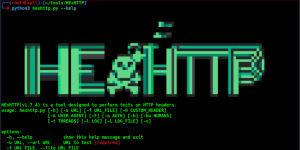Recon Tool: Smap

Reading Time: 2 Minutes
Reading Time: 3 Minutes
Recon Tool: Smap
Smap
Smap by s0md3v, is a drop-in replacement for Nmap powered by shodan.io. It is a replica of Nmap which uses shodan.io’s free API for port scanning. It takes same command line arguments as Nmap and produces the same output which makes it a drop-in replacement for Nmap.
Passive and active scanning when it comes to recon while performing Bug Bounty or Penetration testing is crucial. They both have different techniques but difference results – and are measured by the time needed to complete each. Sometimes you need to control how to do both, and with the addition of getting info from Shodan, this makes it the best, fastest way to gathering info on a host or sets of hosts as part of your initial stages of recon.
Features
- Scans 200 hosts per second
- Doesn’t require any account/api key
- Vulnerability detection
- Supports all nmap’s output formats
- Service and version fingerprinting
- Makes no contact to the targets
See Also: Recon Tool: PSRecon
Installation
Binaries
You can download a pre-built binary from here and use it right away.
Manual
go install -v github.com/s0md3v/smap/cmd/smap@latest
Confused or something not working? For more detailed instructions, click here
AUR pacakge
Smap is available on AUR as smap-git (builds from source) and smap-bin (pre-built binary).
See Also: Offensive Security Tool: Proxmark3
Usage
Smap takes the same arguments as Nmap but options other than -p, -h, -o*, -iL are ignored. If you are unfamiliar with Nmap, here’s how to use Smap.
Specifying targets
smap 127.0.0.1 127.0.0.2
You can also use a list of targets, separated by newlines.
smap -iL targets.txt
Supported formats
1.1.1.1 // IPv4 address
example.com // hostname
178.23.56.0/8 // CIDR
Output
Smap supports 6 output formats which can be used with the -o* as follows
smap example.com -oX output.xml
If you want to print the output to terminal, use hyphen (–) as filename.
Supported formats
oX // nmap's xml formatoG // nmap's greppable formatoN // nmap's default formatoA // output in all 3 formats above at onceoP // IP:PORT pairs seperated by newlinesoS // custom smap formatoJ // json
Note: Since Nmap doesn’t scan/display vulnerabilities and tags, that data is not available in nmap’s formats. Use -oS to view that info.
Specifying ports
Smap scans these 1237 ports by default. If you want to display results for certain ports, use the -p option.
smap -p21-30,80,443 -iL targets.txt
See Also: Write up: Hacking is an art, and so is subdomain enumeration.
Considerations
Since Smap simply fetches existent port data from shodan.io, it is super fast but there’s more to it. You should use Smap if:
You want
- vulnerability detection
- a super fast port scanner
- results for most common ports (top 1237)
- no connections to be made to the targets
You are okay with
- not being able to scan IPv6 addresses
- results being up to 7 days old
- a few false negatives









